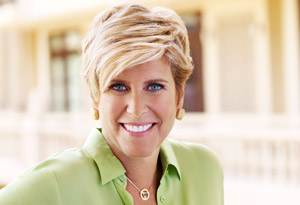How Can I Help My Kids Get the Best Financial Aid Package?
Suze's advice on the best way to maximize your child's college aid.

Photo: Robert Trachtenberg
Q. Two of my three children will enter college in the next few years. Friends have told me that I'd be wise to hide money in a mattress so that it looks like I have fewer assets and the kids will get a better financial aid package. That seems deceit-ful to me, but the thought of paying two tuitions on a household income of $100,000 gives me chills. We have small 529 accounts set up. Is there anything we can (honestly) do to help our children get the best financial aid packages?
Suze: Are you kidding me? My first piece of advice is to get new friends who live by my principle: Always do what is right, not what is easy.
Still, I hear you on the stress factor. For starters, keep in mind that financial aid offices do look at the whole family picture; you're likely to get more aid if you are putting two or three kids through school rather than one. If your children end up attending different universities, just make sure that each school is well aware of your overall situation.
In the meantime, the best way to strengthen your financial position is to boost your retirement savings. I've said a gazillion times that retirement savings need to come before college funds, and socking away money in a retirement fund can also actually help your odds of landing a bigger financial aid package. That's because retirement savings aren't counted as parental assets when computing financial aid. (One exception: Money you contribute to a retirement plan such as an IRA or 401(k) in the year that you apply for aid will be counted as "untaxed income" and will be a factor in your aid package.)
In 2012 anyone under age 50 can contribute a maximum of $17,000 to a 401(k) and $5,000 to an IRA. If you're at least 50, those limits rise to $22,500 and $6,000. That's a lot of money that will not only help your retirement security but also reduce the amount of family assets that aid offices will factor into their calculations.
I am adamant that the best use of a Roth IRA is for your retirement. But I also want you to understand that the money you and your husband put into a Roth is 100 percent yours to use at any time, for any reason. So if you fund a Roth IRA and then decide that the financial aid packages offered to your kids aren't enough, you can dip into your contributions to help pay the college bills without any tax or penalty.
Suze Orman's latest book is The Money Class: How to Stand in Your Truth and Build the Future You Deserve (Spiegel and Grau). Ask her a question
More Advice from Suze
Suze: Are you kidding me? My first piece of advice is to get new friends who live by my principle: Always do what is right, not what is easy.
Still, I hear you on the stress factor. For starters, keep in mind that financial aid offices do look at the whole family picture; you're likely to get more aid if you are putting two or three kids through school rather than one. If your children end up attending different universities, just make sure that each school is well aware of your overall situation.
In the meantime, the best way to strengthen your financial position is to boost your retirement savings. I've said a gazillion times that retirement savings need to come before college funds, and socking away money in a retirement fund can also actually help your odds of landing a bigger financial aid package. That's because retirement savings aren't counted as parental assets when computing financial aid. (One exception: Money you contribute to a retirement plan such as an IRA or 401(k) in the year that you apply for aid will be counted as "untaxed income" and will be a factor in your aid package.)
In 2012 anyone under age 50 can contribute a maximum of $17,000 to a 401(k) and $5,000 to an IRA. If you're at least 50, those limits rise to $22,500 and $6,000. That's a lot of money that will not only help your retirement security but also reduce the amount of family assets that aid offices will factor into their calculations.
I am adamant that the best use of a Roth IRA is for your retirement. But I also want you to understand that the money you and your husband put into a Roth is 100 percent yours to use at any time, for any reason. So if you fund a Roth IRA and then decide that the financial aid packages offered to your kids aren't enough, you can dip into your contributions to help pay the college bills without any tax or penalty.
Suze Orman's latest book is The Money Class: How to Stand in Your Truth and Build the Future You Deserve (Spiegel and Grau). Ask her a question
More Advice from Suze
Please note: This is general information and is not intended to be legal advice. You should consult with your own financial advisor before making any major financial decisions, including investments or changes to your portfolio, and a qualified legal professional before executing any legal documents or taking any legal action. Harpo Productions, Inc., OWN: Oprah Winfrey Network, Discovery Communications LLC and their affiliated companies and entities are not responsible for any losses, damages or claims that may result from your financial or legal decisions.



